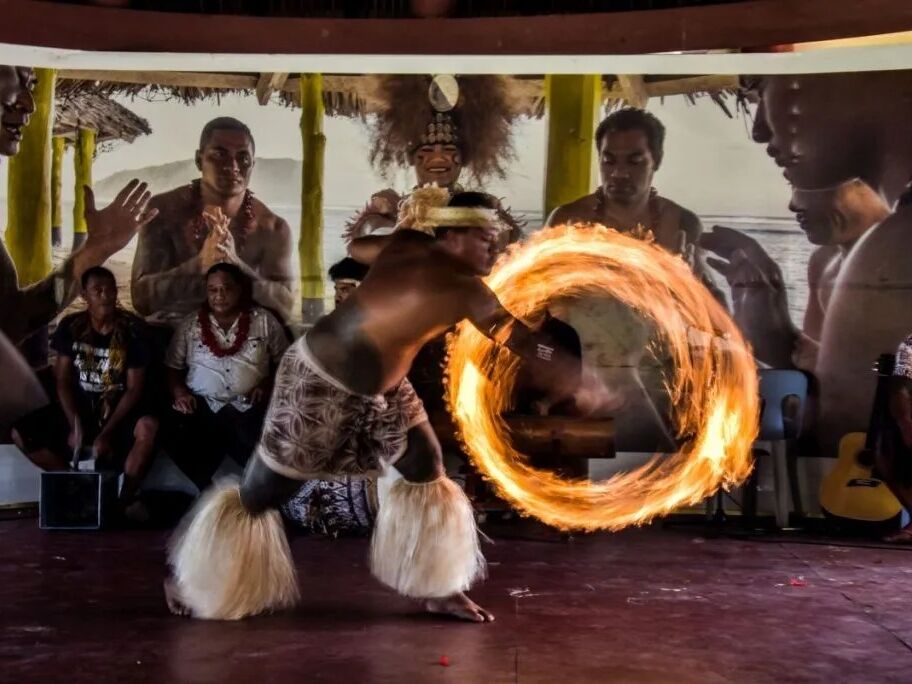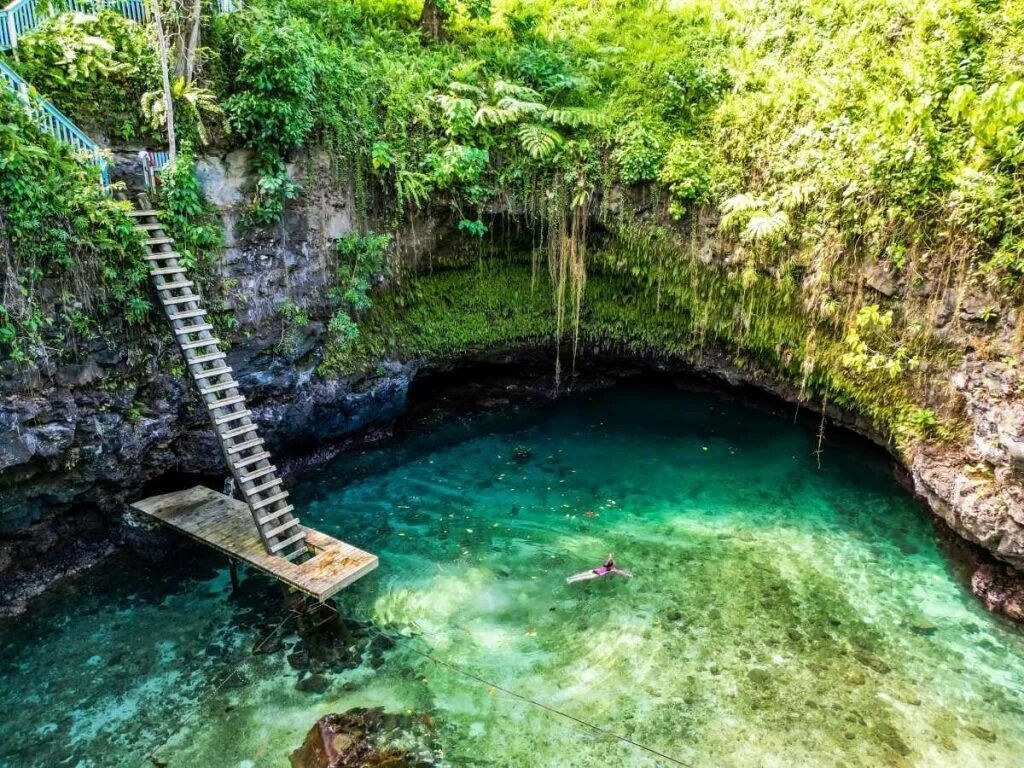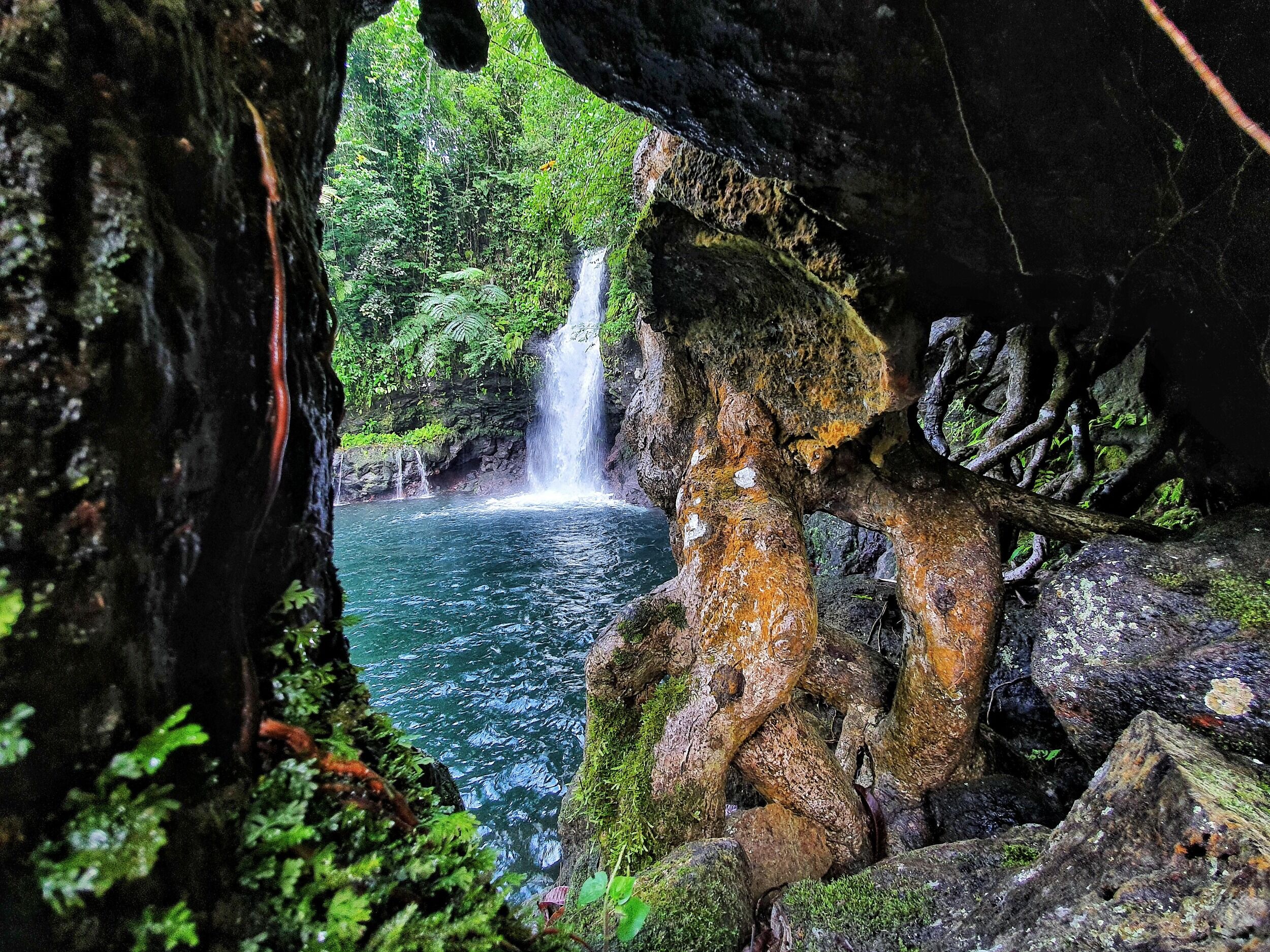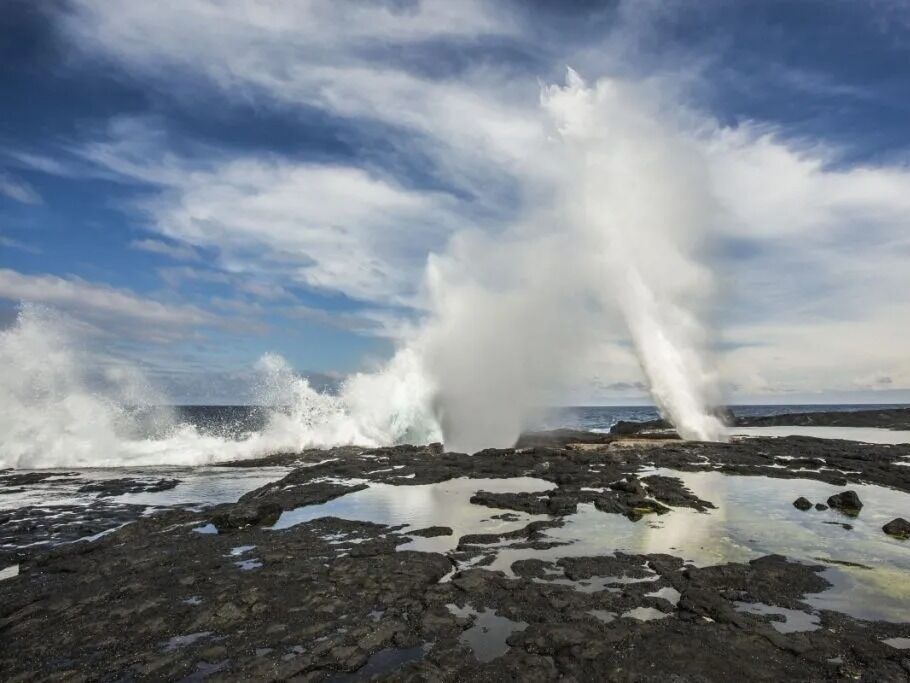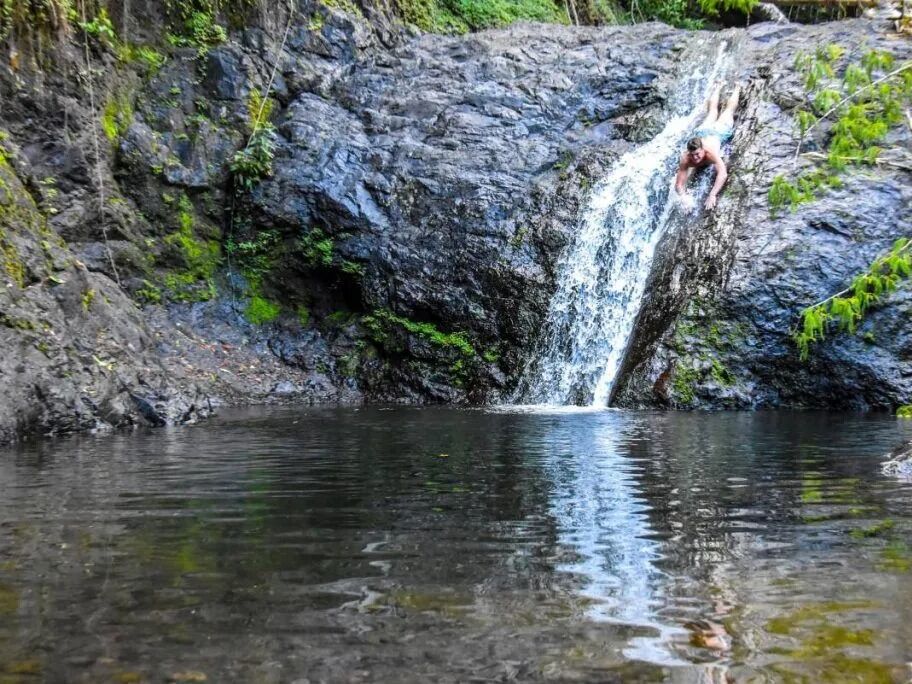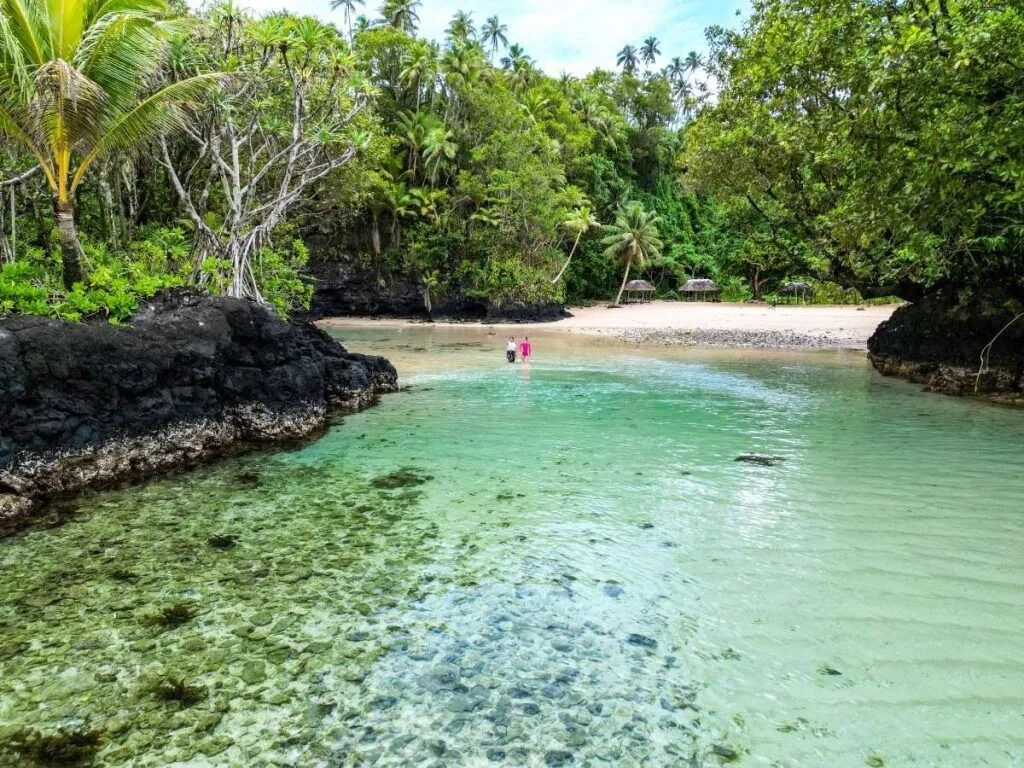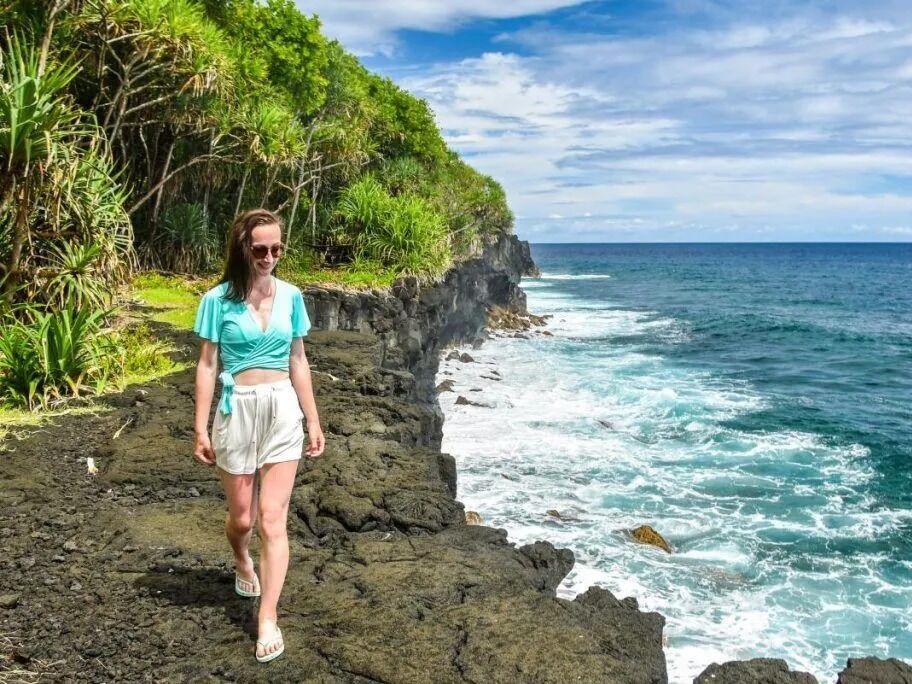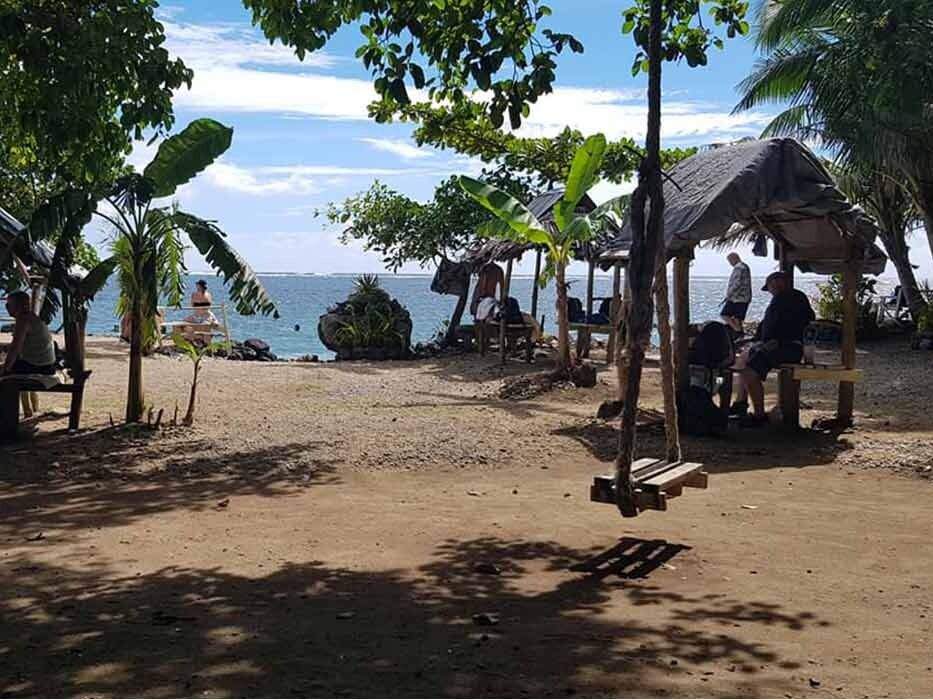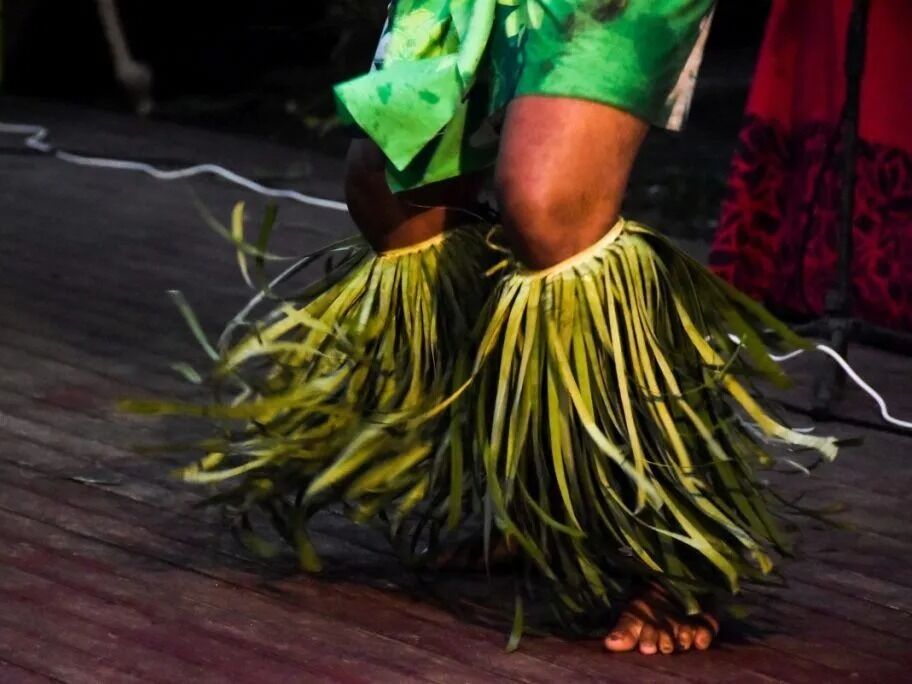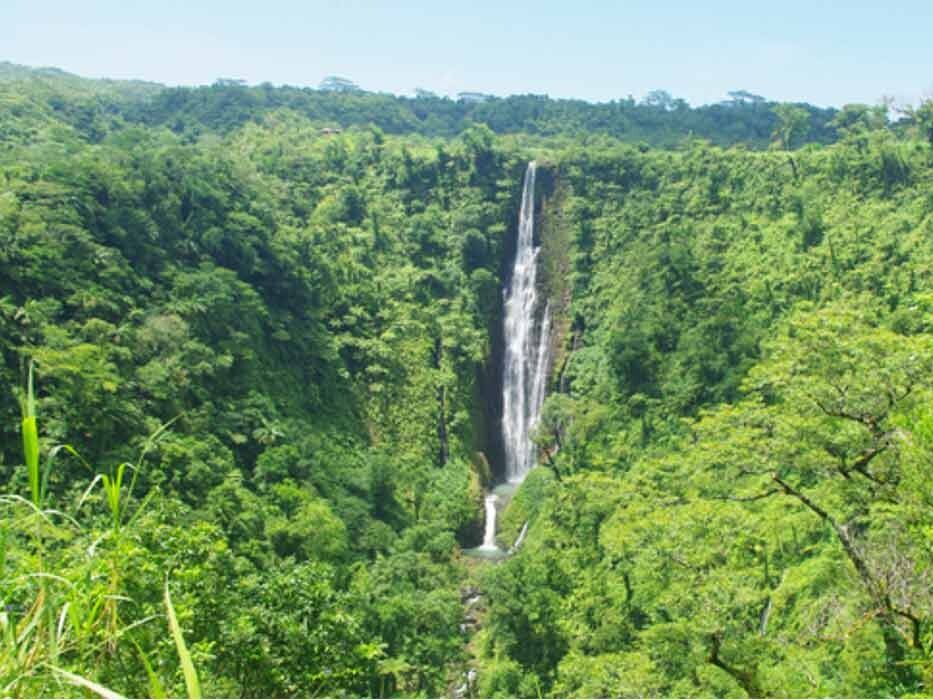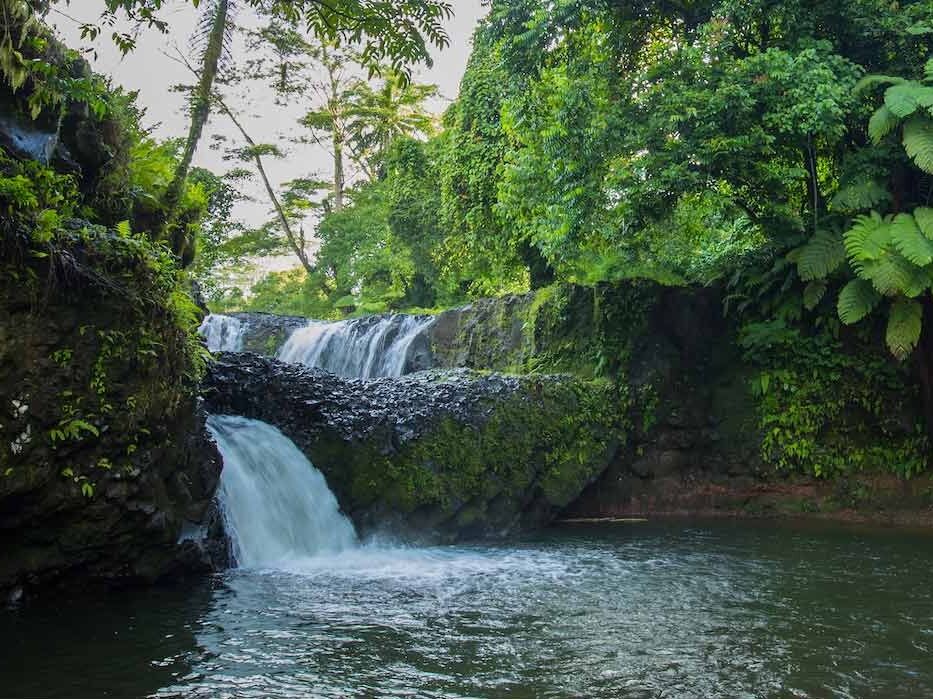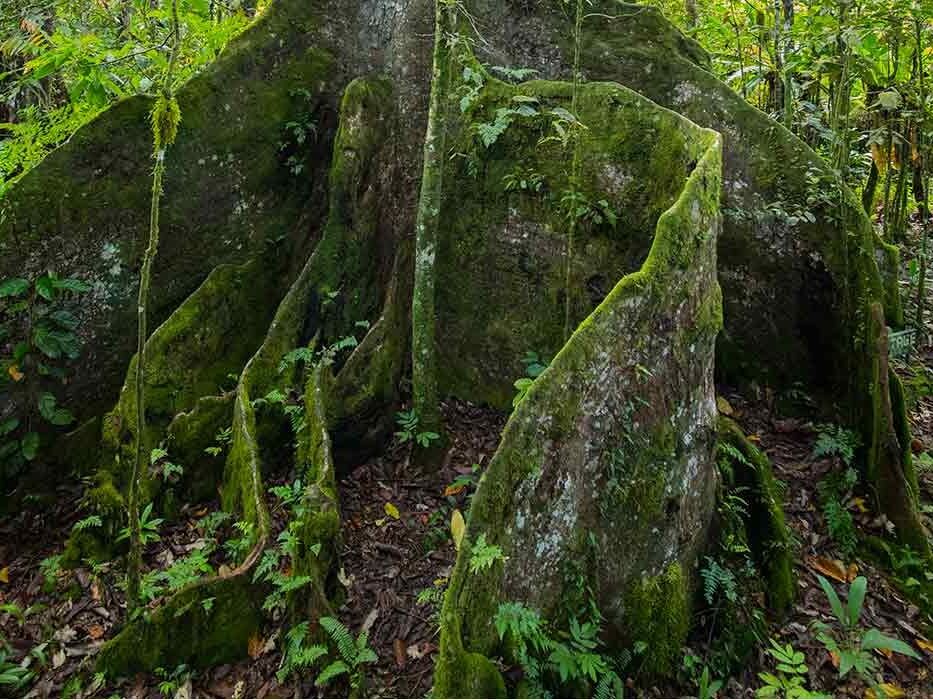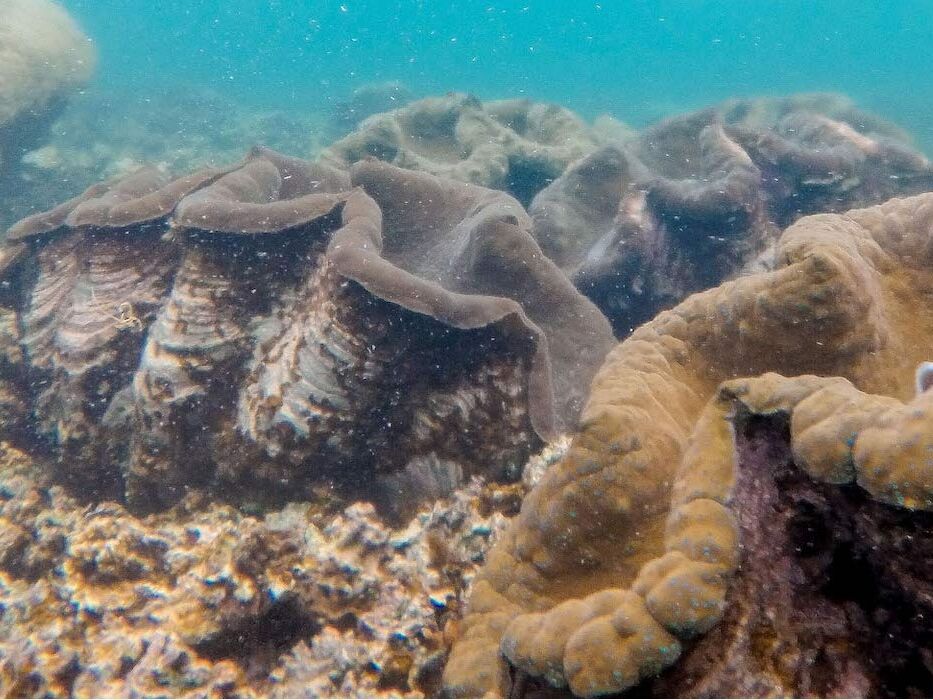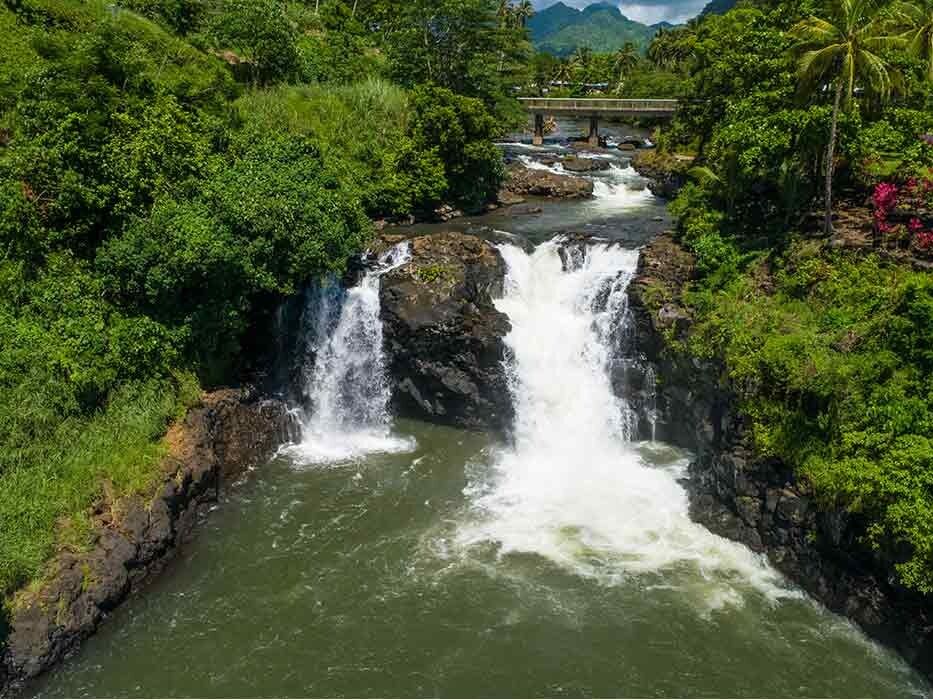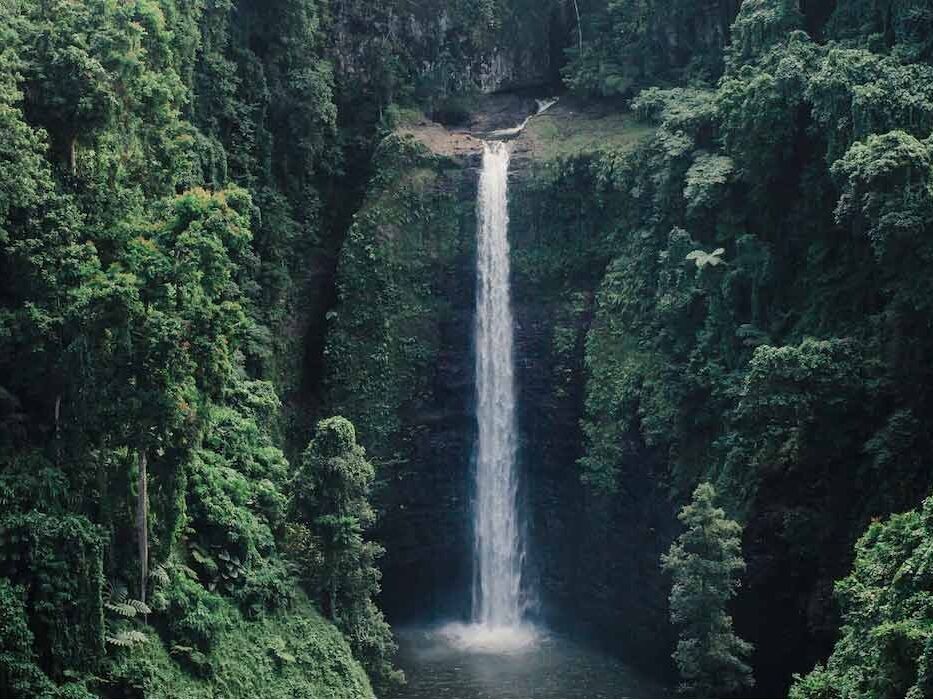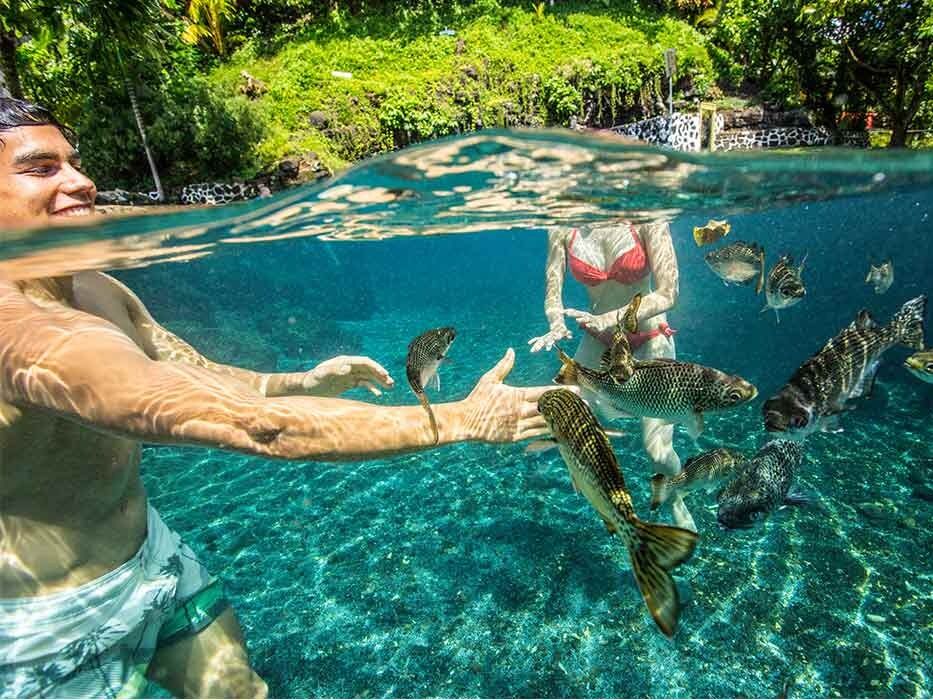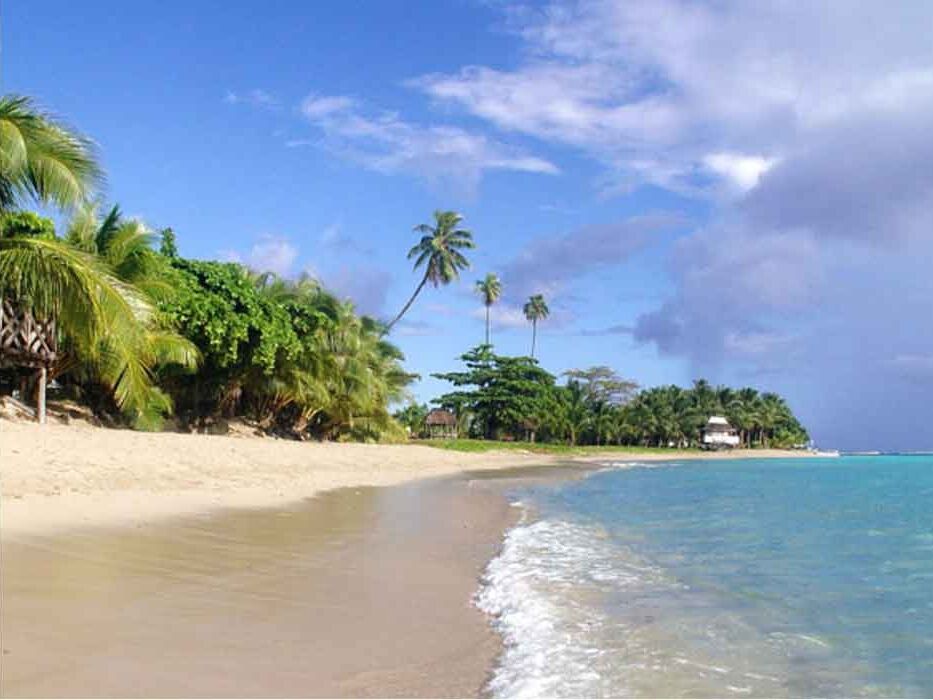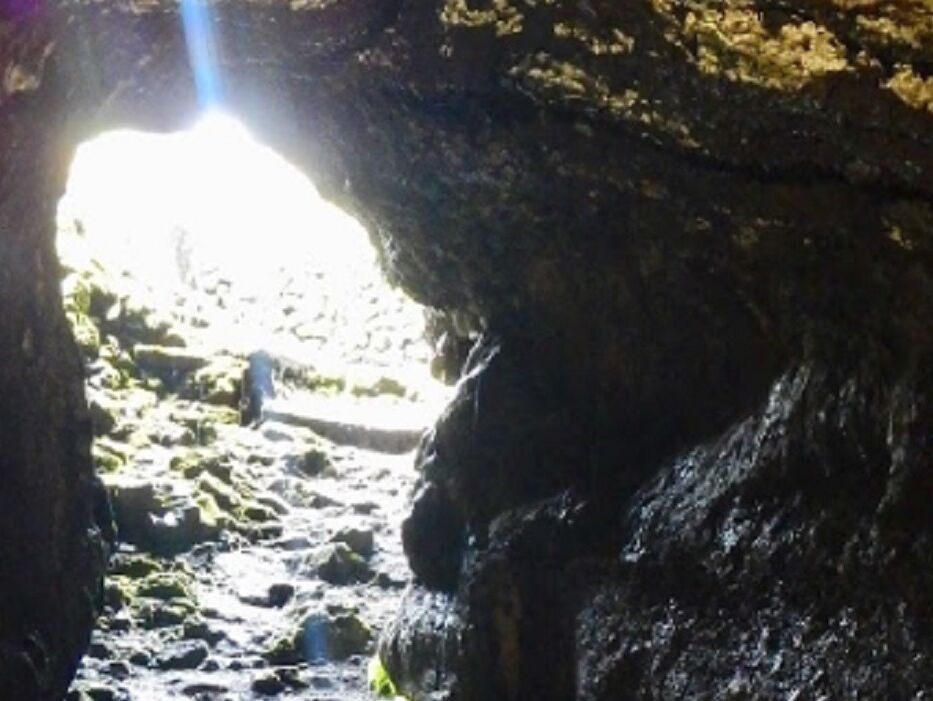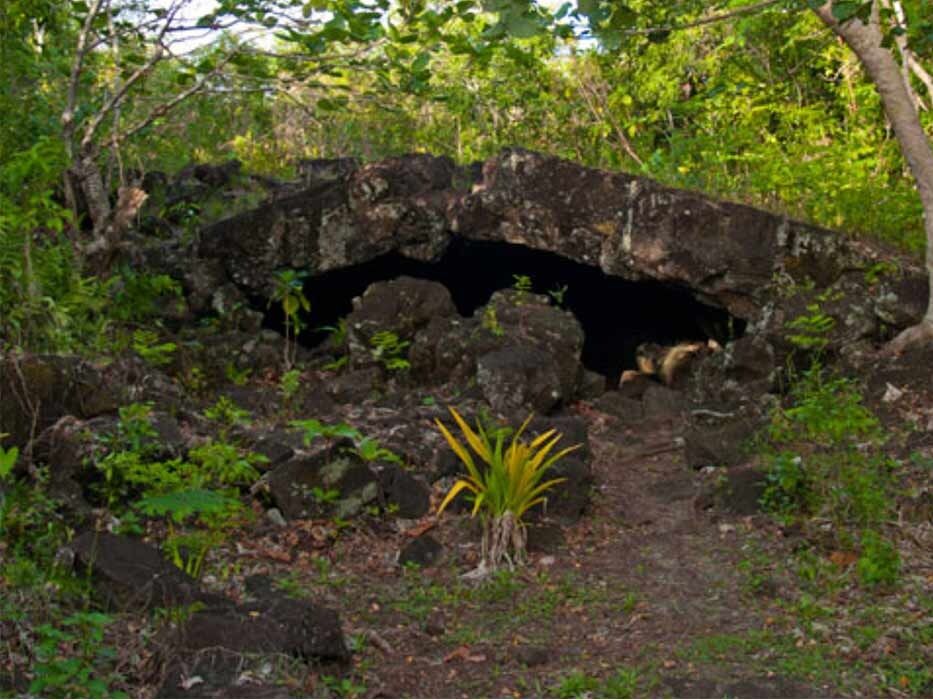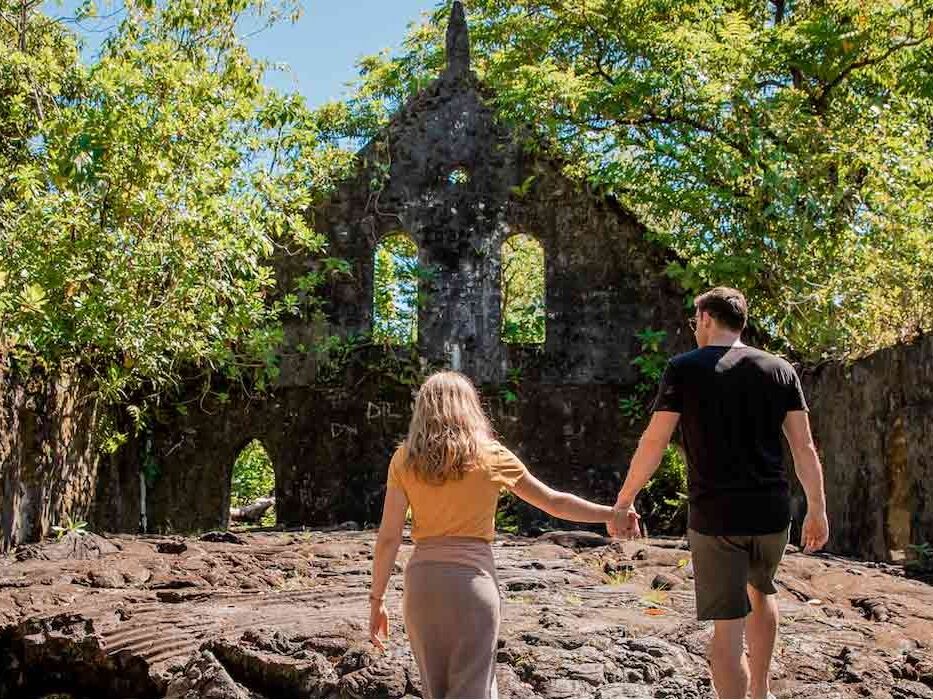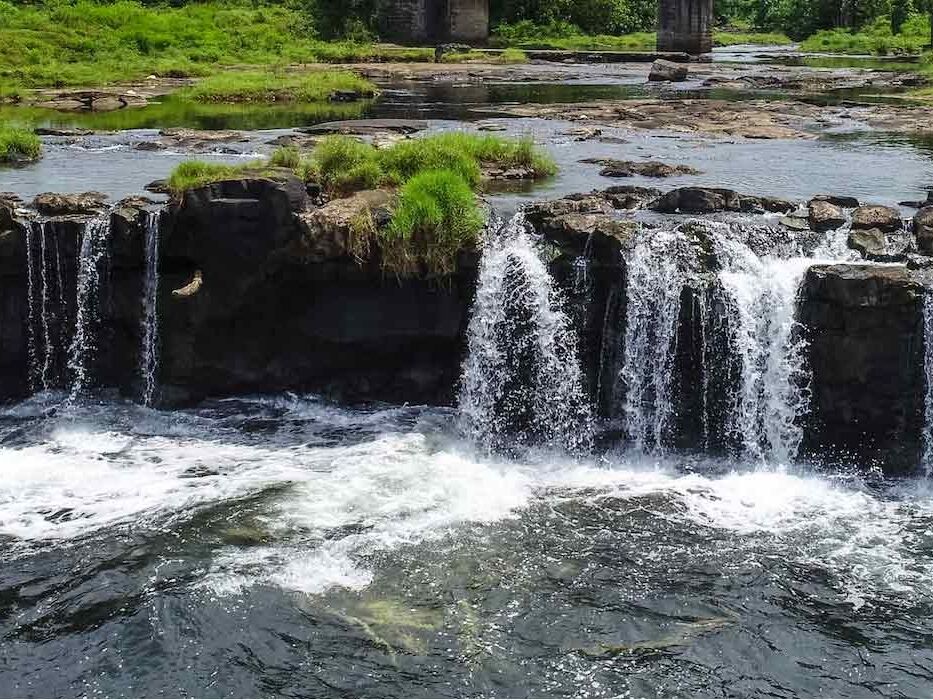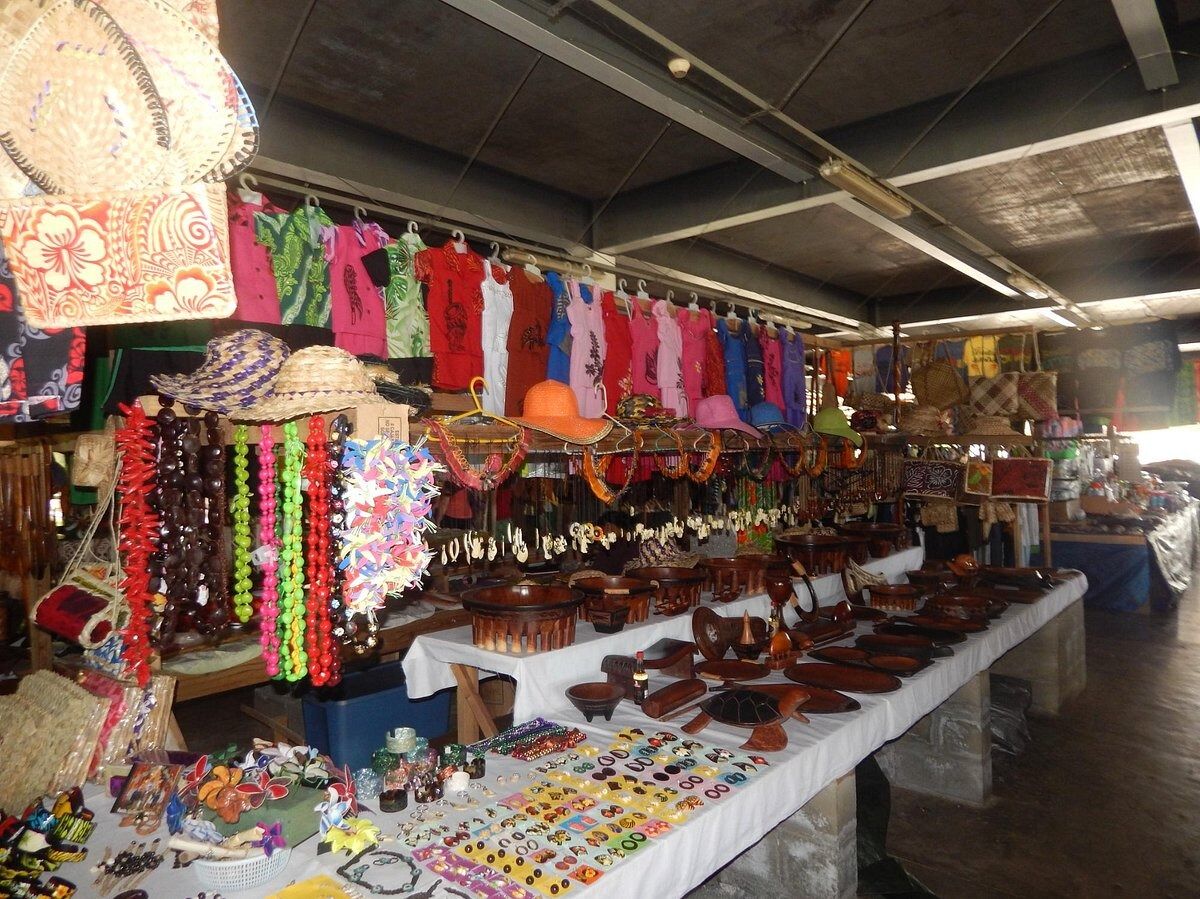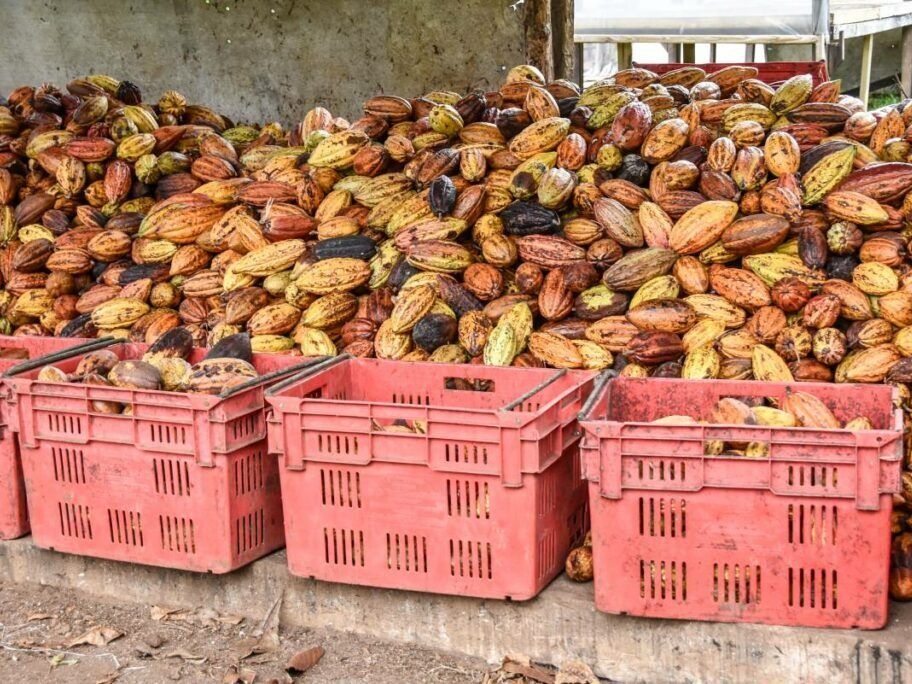
Jemma & Craig
Jemma & Craig
Things to Do
Samoa Cultural Village
“Fa’a Samoa” means “The Samoan Way” and you’ll certainly get the full flavour of the Samoan culture at Samoa’s best-value attraction (and not only because it’s free). Happening from 10:30 am to 12:30 pm, Tuesday to Friday, Samoa Cultural Village starts with a hands-on experience of weaving your own plate for the umu. You’ll then be formally welcomed with an ‘ava ceremony before seeing how a traditional umu feast is prepared. While your lunch is cooking, you’ll move between various fale to see how ‘ava bowls are carved and even witness a traditional pain-staking Samoan tatau (tattoo) being performed. Finally, sit down with your freshly prepared lunch while watching a fiafia cultural performance including fire dancing.
To-Sua Ocean Trench
This 30 m (98 ft)-deep coastal sinkhole has a cave on either side, one of which dips underwater leading to the ocean so avoid that one. Ropes cross the swimming pool to hold onto in case there is a bit of current. Otherwise, floating with verdant reeds hanging from the cave walls above is a beautiful experience.
There are more sinkholes to peer into around the site, so be sure to wander through the manicured grounds of this attraction. You can also follow a footpath down to the coast to a classic Samoan swimming pool for more bathing opportunities.
Afu Aau Waterfalls
One of the most stunning waterfalls and swimming holes in Samoa (and the South Pacific) awaits down a short and gorgeously maintained jungle trail on the southeast side of Savai’i. Enjoy a refreshing dip in the aqua-blue waters at the base of the 15-20 m (49-66 ft) Afu Aau Waterfall. Pay your fees at the fale just off the main road (the entry sign is easy to spot) then it’s a 650 m (711-yard) drive on a flat dirt road to the car park with a toilet block and changing room.
Alofaaga Blowholes
Alofaaga Blowholes put on a spectacular show of wave power between the fissures of volcanic rock on the coast. Although a treat at any time, the best time to go is high tide. It’s a short but rugged walk that can be slippery, so sturdy shoes are best. Note that you may have to pay two entry fees (totalling approximately ST$10 per person) as the attraction crosses two family lands. Locals will sometimes put coconuts on the blowholes for extra drama. It’s worth asking for directions to the culturally significant Pa Sopo’ia Cave also at the site.
Location: Taga village, signposted off the main road on the southwest coast of Savai’i. Note that the road to the blowholes is about 1.5 km (0.9 mi) of rough unsealed road. 2WDs will just manage but drive carefully.
Papaseea Sliding Rocks
After walking down an anxiously high number of steps, knowing that you have to get back up them again, you’ll come across the first and biggest slide that locals call the “men’s slide”; a near verticle 5 m (16 ft) slide. Further down is the “kids’ slide”, a much less precarious slide with a little drop at the end of extra fun. Finally, at the bottom, you have the “women’s slide”. Lots of fun, lots of laughs; what’s not to love? Avoid the busiest times, which tend to be the weekends, to get optimal slide time.
Location: Se’ese’e, Faleata District on the outskirts of Apia. The access road turns off Maugafolau Road near the University of the South Pacific campus.
Vavau Beach
Vavau Beach offers a secluded and stunning beach destination on the south coast of Upolu. Exclusively for day visitors, there are a number of fales set back from the white sands. Enjoy picturesque islands dotted around a shallow lagoon and soak in the scenery of the bush-clad environment that tops the coastal cliffs on all sides. Pay your entry fees at the access road.
Sea Arches and Pandanus Forest on the Coastal Walk – FREE
Protected within the O Le Pupu Pu’e National Park, the one-hour return walk (with no entry fees) winds its way through lush pandanus forest before emerging on rocky lava cliffs. With the waves crashing below, seabirds occupying the horizon, and a number of coastal sea arches to uncover as you walk, this certainly is a special place to experience on foot. Speaking of, closed footwear is recommended and the trail is mostly flat, making it suitable for most fitness levels.
O Le Pupu Pu’e National Park. Signposted along Main South Coast Road between Sa’agafou and Saleilua, Upolu. Note that the 3 km (1.9 mi) road to get to the trail car park is a 4WD road but 2WD is usually Ok if taken with care. Otherwise, you can park at the information boards along the main road and walk to the Coastal Track, which makes the walk last a total of 2h30mins return.
Palolo Deep Marine Reserve
This very convenient spot is only five minutes walk from the centre of Apia (head east to Vaiala Beach). There’s a blue hole surrounded by walls of coral and tropical fish so it’s great for snorkelling, diving and swimming or just relaxing with a picnic. There are toilets, showers and changing rooms and snorkel gear can be hired.
Gear is available for hire ($5.00/mask & $2.00/snorkel). It is recommended that visitors plan their snorkel trips for high tide as attempting to reach the high tide could result in damaged coral or coral cuts for the swimmer.
Bring your snorkeling gear and a beach towel as it’s a great place for swimming and snorkeling. Reef shoes are optional but try and arrange your visit at high tide. Basic shower and change room facilities provided. Open daily from 8am-6pm.
Le Manumea Fiafia Night
Don’t just experience Samoa’s traditional moves but dances from across the Pacific at the Thursday night Le Manumea Hotel Island Night. Following the typical fiafia format, you’ll be treated to a Polynesian-style buffet before sitting down to a captivating show with dances incorporated from the islands of Hawaii, the Cook Islands, Tahiti and more. That’s not to say there’s no Samoan flavour in the mix, with traditional Samoan dances, ‘ava ceremony and coconut demonstrations also included. As for the finale, be wowed by the epic siva afi fire dance! What’s more, Le Manumea has some of the best drink offers on the islands with a happy hour that lasts all day long! Book your island night at Le Manumea on Viator.
Papapapaitai Falls
Whilst driving towards the southern coast of Upolu via Cross-Island Road. Papapapaitai (Tiavi) Waterfall is a must-stop and see. One of the most photographed falls in Samoa and also considered the longest at 100m high, cascading into a deep gorge. Its untouched surrounding brings life and a sense of mystery to all.
It is recommended for visitors to stay behind the rail for safety purpose.
Togitogiga Waterfall
This waterfall is located in the village of Saleilua and is a situated few miles away from the O Le Pupu Pue National Park.
It's a popular swimming spot and place to linger for a picnic, plus there are changing rooms and restrooms. There is also a recreation area ideal for games such as rugby and volleyball for those with their own equipment.
The fall is known to be used as a swimming area for the great warriors of Samoa in the past. The best time for viewing and swimming is during the wet season which is usually from November to April.
Ma Tree Walk
Open daily with free entry, the Ma Tree is like something from a fairy tale.
A 700m walk through the tropical rainforest within the O le Pupu Pu’e National Park.
At the end of the walk, you will encounter the amazing Ma Tree with its buttress roots that extend out for meters in all directions.
The walk can be extended from the Ma Tree with another 1.4km walk to the Togitogiga visitor centre, though this trail isn't maintained making it extremely rough. It should only be attempted by the experienced hiker
Giant Clam Sanctuary
Pay a small fee and get directions before slipping on your mask, snorkel and flippers to search for Samoa's giant clams.
Be careful not to touch the giant clams as they close their shells extremely quickly!
Best viewed at high tide.
Falefa Falls
Day fales and a picnic table are located in a pretty setting by the river.
This is a nice place to relax and go for a swim in the river.
A close-up view of the waterfall can be seen from the Falefa Bridge.
The Falefa Bay is naturally deep and was once used as a harbour for ships transporting crops in the late 1800s and early 1900s.
Fuipisia Waterfall
Waterfalls in Samoa are confident travellers and if you're seeking an adrenaline adventure with a spectacular view and green surrounding. Fuipisia waterfall is just for you! Whether it's witnessing the falls dive into a deep end or taking the courage of bathing with a panoramic view from the falling point.
An excellent place for bird watching, photos, and relaxing on the cliff tops. Open daily with entry fees mentioned below.
Sopo'aga Falls Viewpoint
Alongside the path to the viewing area are many different types of Samoan plants and trees which are labelled by their Samoan and scientific names.
Splendid gardens fill the surrounding area. There is also an area for umu demonstrations and coconut husking.
Piula Cave Pool
Along the Main East Coast Road, 45mins from Apia, you will find Piula Cave Pool located at the Piula Theological College in the Village of Lufilufi.
Explore the underwater cave that connects to a second cave. Day fales and toilet facilities available. Open Mon-Sat: 8am-4pm.
Visitors are asked to be mindful of the following when visiting Piula:
Don’t walk across the cricket field. Follow the main road.
Alcohol and drugs are not permitted
All visitors must pay the entrance fee
Secure your belongings. The college is not responsible for lost items
Nudity is strictly forbidden
Swimwear is allowed only in pool area
No fishing in the pool and conservation area
No diving or jumping into the pool
There is no lifeguard on site
Place all rubbish in the bins
Do not feed fish
The Chapel is located right at the top of the mouth of the cave. Though the pool is close to the shoreline, the freshness and the coolness of the water the cave provides is highly admired by the tourist and the local people who visited and took a dive in the Fatumea Cave Pool of Piula Theological College.
So why not come down and experience the coolness and freshness of the pool? Afio mai! Come and see for yourself.
The College is giving its best to maintain and upgrade the pool and its facilities to acceptable standards for the tourist market. Unfortunately, this is beyond our monetary capabilities, as the College is a non-profitable institution. Therefore, we humbly seek your kind assistance in any way you can for this course.
Manase beach, Samoa
Snorkel with Sea turtles
Paia Dwarfs Cave
Paia Dwarfs Cave is found in the northern part of Savai'i Island in the village of Paia, not far from Manase.
According to local belief, dwarfs still inhabit this intriguing lava tube cave and their footprints can still be seen today.
Exploring the cave can take up an entire day. Taking a guide from the village of Paia is strongly recommended and visitors should come prepared with good shoes, water and a torch.
Access to the site is on a dirt road which is about 15 minutes drive from the village entrance.
Pe'ape'a Cave
This lava tube cave, named after the swallows that inhabit it, is easily accessible from the road and runs more than a kilometre towards the coast.
This cave is home to a unique nocturnal creature, the white rumped swiftlet. The 'clicking' of the birds is clearly audible as they fly in the darkness.
The entrance to the cave is locked and that makes a guide essential.
House of Rock
According to a legend, a competition was held between the men and women of the village to determine who could bring a house in the least amount of time. The women won since they had completed the construction first forgoing their night's sleep and the men never completed theirs.
A Samoan saying 'e au le inailau a tamaitai' means that whatever task women set out to do is completed seems to have been derived from this legend.
Moso's Footprint
This geological formation is found along the north-west coast of Savaii. It is an unusually shaped crack in the lava and is held to be the footprint of a famous giant, Moso. This formation is housed in a small building on the right of the road. A small admission fee is required to see the footprint. Entry Price includes footprint and House of Rock
A Samoan saying 'e au le inailau a tamaitai' means that whatever task women set out to do is completed seems to have been derived from this legend.
Lava Lagoon
This geological formation is found along the north-west coast of Savaii. It is an unusually shaped crack in the lava and is held to be the footprint of a famous giant, Moso. This formation is housed in a small building on the right of the road. A small admission fee is required to see the footprint.
Mu Pagoa Waterfall
A rare natural feature, this impressive waterfall drops straight into the surging sea. A vast open river flow stretches from underneath the Puleia bridge towards the sea. An excellent place for taking pictures and experiencing the local villagers as they engage in utilizing this natural resource for their everyday life activities.
The name of the falls has strong historical significance to the village. The falls tumble about five meters into the sea, providing a very unique sight which can’t be found anywhere else in the islands.
Salelologa New Market
Farmer market as well, Similar to Apia's Markets
Koko Plantation Tour
Want to see Savai’i? Join local guide, Nu’u of Savai’i Tours for either one of his island sightseeing tours or koko (cocoa) plantation tour (or both)! Departing from Va-i-Moana Seaside Lodge, the Koko Plantation Tour has you seeing the koko cultivation process from seedlings to dried cocoa beans. The tour also includes a demonstration on how to make koko Samoa (Samoan hot chocolate) with tastings!
